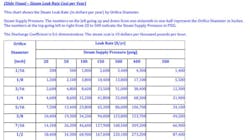PACE Financing Gains Momentum in the Commercial Sector
Money, money and more money are the obstacles to energy conservation projects. If only commercial building owners could evade high interest rates, out-of-pocket cash, negative cash flows and short financing terms, then they could reap the benefits of reduced utility costs, right?
Under the right circumstances, PACE financing (Property Assessed Clean Energy) can check off all those boxes.
How PACE Works
To be eligible for commercial PACE financing, projects must save energy, save water or produce renewable energy (see eligible equipment on page 10). Eligible property types are multifamily (4+ units), commercial (office, malls, gas stations, restaurants), and industrial (factories, warehouses, computer chip manufacturers).
The key feature that propels PACE financing is an assessment made to the building owner’s tax property bill, much like any other local tax assessment. The assessment provides collateral for the debt, thus skipping around conventional financing’s required upfront payment. If the property is sold, the assessment is transferred to the new owner via the property tax. Without putting their general funds at risk, municipalities and counties work with private-sector lenders to provide financing for qualified projects.
The net result for the owner or landlord: No money out of pocket, positive cash flow from the start, terms of up to 20 years, and no personal liability because PACE lending is nonrecourse. The long terms for the financing ensure that the energy and water savings are greater than the PACE assessment. The interest portion of the assessment is tax deductible for the owner.
Commercial PACE programs typically require applicants to have an energy audit by a third-party auditor, contractor or utility-sponsored energy efficiency program. The audit corroborates the energy and cost savings from the proposed improvements for the mortgage lender. It also makes the owner aware of all conservation opportunities and their potential savings. The depth and cost of audits vary widely, from free utility audits to investment-grade audits costing tens of thousands of dollars. The project and property size type should guide the choice of audit.
Where PACE Works and Doesn’t Work
To enact PACE programs, states must first pass legislation that authorizes municipalities to place assessments on property bills. Currently, 32 states and the District of Columbia have legislation in place to enable commercial PACE programs, according to PACENation (pacenation.us), a nonprofit that promotes PACE financing. However, some states that have passed legislation do not yet have working PACE programs, and some programs are too new to have yet funded a project.
According to the Department of Energy’s Clean Energy Finance Guide, PACE is not a good fit for small-scale investments of less than $50,000 and is available only to property owners, not renters. PACE cannot finance portable items, and all improvements stay with the building.
Buildings with mortgages must have lender approval in order to put a PACE assessment on the property bill, which is a lien that is senior to the mortgage loan. While the PACENation website lists more than 100 lenders that have consented to a PACE transaction, none are obliged to do so. Moreover, lending institutions don’t have consistent, formalized approaches across branches or regions, says David Gabrielson, PACENation’s Executive Director. Gabrielson reports that contractors and owners with skill and experience in PACE often have an advantage in getting approval from the mortgage lender.
Properties with mortgages that have been pooled into a commercial mortgage-backed security pose a special problem because the mortgage with the PACE assessment would no longer meet the original underwriting criteria of the pooled security. As a result, properties with securitized mortgages are not a good fit.
The Benefit of Bundling
A single PACE transaction can include a number of different system upgrades. It is often in the building owner’s interest to bundle multiple measures into a deep retrofit project. For example, an elevator modernization might have an extremely long payback from the energy savings – 30 years or more – making it very difficult to finance the improvement by itself. But if the modernization were part of a larger bundle that included solar panels and LED relamping, the financing might pencil out favorably. PACE lets owners think big about improvements.
A PACE transaction completed in October provides financing for three Simon Property Group retail malls in Texas: Barton Creek Square in Austin, Lakeline Mall in Cedar Park, and Round Rock Premium Outlets in Round Rock. The three malls will be retrofitted with LED lighting and low-flow water fixtures, and two of the malls will also receive HVAC improvements. The three transactions totaled $3 million. Financing was provided by Petros PACE Finance of Austin, TX.
PACE programs across Texas are based on a “PACE in a Box” model designed by volunteer stakeholders. The model provides a consistent approach that expedites the funding process.
Getting Underway
The first step for owners looking at PACE is determining whether a program exists in their local property tax district. The PACENation website has a list of states with enabling legislation and local programs within the states. The website has a number of practical resources to help owners through the process, including guides to working with existing lenders, case studies, a legislative toolkit and a document library.
